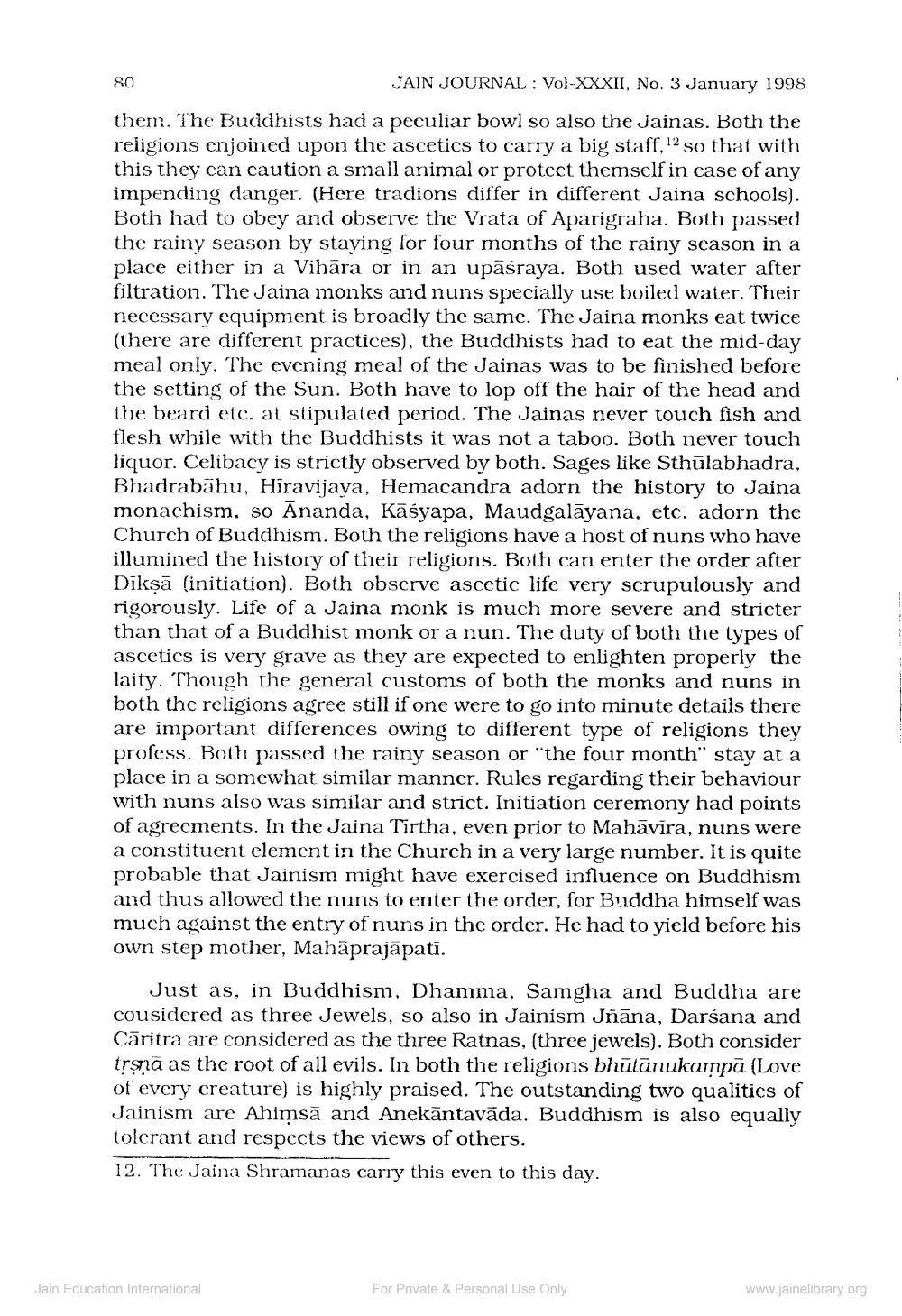________________
JAIN JOURNAL: Vol-XXXII, No. 3 January 1998
them. The Buddhists had a peculiar bowl so also the Jainas. Both the religions enjoined upon the ascetics to carry a big staff, 12 so that with this they can caution a small animal or protect themself in case of any impending danger. (Here tradions differ in different Jaina schools). Both had to obey and observe the Vrata of Aparigraha. Both passed the rainy season by staying for four months of the rainy season in a place either in a Vihara or in an upasraya. Both used water after filtration. The Jaina monks and nuns specially use boiled water. Their necessary equipment is broadly the same. The Jaina monks eat twice (there are different practices), the Buddhists had to eat the mid-day meal only. The evening meal of the Jainas was to be finished before the setting of the Sun. Both have to lop off the hair of the head and the beard etc. at stipulated period. The Jainas never touch fish and flesh while with the Buddhists it was not a taboo. Both never touch liquor. Celibacy is strictly observed by both. Sages like Sthulabhadra, Bhadrabahu, Hiravijaya, Hemacandra adorn the history to Jaina monachism, so Ananda, Kasyapa, Maudgalayana, etc. adorn the Church of Buddhism. Both the religions have a host of nuns who have illumined the history of their religions. Both can enter the order after Dikṣā (initiation). Both observe ascetic life very scrupulously and rigorously. Life of a Jaina monk is much more severe and stricter than that of a Buddhist monk or a nun. The duty of both the types of ascetics is very grave as they are expected to enlighten properly the laity. Though the general customs of both the monks and nuns in both the religions agree still if one were to go into minute details there are important differences owing to different type of religions they profess. Both passed the rainy season or "the four month" stay at a place in a somewhat similar manner. Rules regarding their behaviour with nuns also was similar and strict. Initiation ceremony had points of agreements. In the Jaina Tirtha, even prior to Mahavira, nuns were a constituent element in the Church in a very large number. It is quite probable that Jainism might have exercised influence on Buddhism and thus allowed the nuns to enter the order, for Buddha himself was much against the entry of nuns in the order. He had to yield before his own step mother, Mahaprajapati.
80
Just as, in Buddhism, Dhamma, Samgha and Buddha are cousidered as three Jewels, so also in Jainism Jñana, Darśana and Caritra are considered as the three Ratnas, (three jewels). Both consider trana as the root of all evils. In both the religions bhūtānukampā (Love of every creature) is highly praised. The outstanding two qualities of Jainism are Ahimsa and Anekantavāda. Buddhism is also equally tolerant and respects the views of others.
12. The Jaina Shramanas carry this even to this day.
Jain Education International
For Private & Personal Use Only
www.jainelibrary.org




